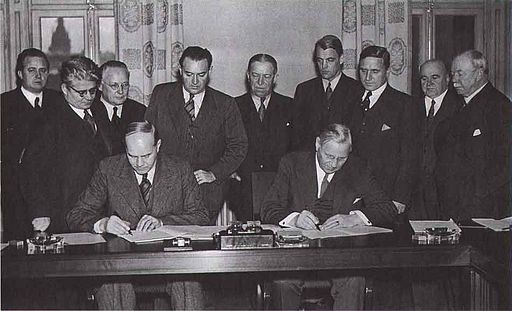The Swedish Model
What is the Swedish model? In Sweden, the unions and employers take joint responsibility for developing and agreeing on the regulations that apply in working life. The Saltsjöbaden Agreement was concluded in 1938 between the unions and employers and celebrates its 80th anniversary this year.
In the early 1930s, Sweden experienced the highest number of labour market conflict days in Europe. Conflicts that politicians were unable to stop. On 20 December 1938, a solution was achieved via the Saltsjöbaden Agreement. An agreement concluded directly between employers and employees. Eight years after this agreement, Sweden experienced the lowest number of labour market conflict days in Europe.
The Swedish Model has since been based on the fact that the social partners, i.e. the unions and the employers' organizations, take joint responsibility for developing the regulations that will apply on the labour market. Agreements and conditions are then regulated in collective bargaining agreements which are adapted to each industry or workplace.
Signing the Saltsjöbaden Agreement in 1938. August Lindberg (from the Swedish Trade Union Confederation) is on the left and Sigfrid Edström (from the Federation of Swedish Industry) is on the right.
The Swedish Model and collective bargaining agreements
The Swedish labour market is based on labour law which is supplemented with improved conditions thanks to collective bargaining agreements. These agreements are the method by which the unions and employers regulate conditions based on needs and wishes per industry or per workplace.
Go to collective bargaining agreement and agreement areas (in Swedish)
The advantages of collective bargaining agreements
Along with legislation, the discussion of what is to apply in collective bargaining agreements take place regularly in the annual negotiations which are influenced by those directly affected. The decisions thus move closer to each industry and workplace. In addition, certain issues are regulated in collective bargaining agreements and not in legislation such as extra holiday days or overtime pay.
The organisation of the unions
Most unions are members of one of the three major central organizations: the Swedish Confederation of Professional Associations (Saco), the Swedish Confederation of Professional Employees (TCO) or the Swedish Trade Union Confederation (LO). The Swedish Association of Graduate Engineers is part of Saco. Saco Associations are based on the membership educational backgrounds, consequently it does not matter where the members work. For the members of LO and TCO, membership is based on industry affiliation.
Read more about cooperation within Saco
Employer organizations
In the private sector there is, in principle, one employer organization per industry. Most of these, more specifically 50 of them, are members of the Confederation of Swedish Enterprise. Within the municipality and county council sector the employer organizations are called Pacta and SKR (Swedish Municipalities and County Councils). Government agencies, government enterprises and other employers in the government sector are members of the Swedish Agency for Government Employers.
